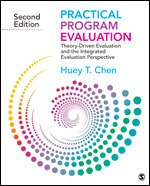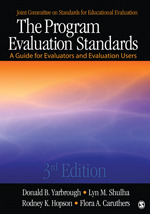


|
|
|
|
|
|
|
|
|
|
|
Site Map |
Time: Wednesday 6:30-8:30 PM
Room: 3306, Graduate
Center, 365 Fifth Avenue:
Section: 01
CRN: 48879
Cross-listing: PSYC 80100-07 (53067)
Office Hours: Please contact me by
email. I can answer most questions by email.
However, we can also schedule a Zoom meeting or office meeting
by appointment. I will only be at the Graduate Center on
days that class meets. It is best to make an appointment
to avoid two students dropping in at the same time.
Contact Information:
Dr. Keith A. Markus
kmarkus@aol.com
(Best way to reach me.)
212-237-8784 (Please do not leave voicemail, I no longer
receive it as email.)
Office: Room 10.63.11, 524 W59
Street. By appointment: GSUC Room
3204.02.
Address: Psychology Department, John Jay College of
Criminal Justice, 524 W 59th Street, New York, NY 10019 USA
If you leave something in my mailbox, please alert me by email.
Course Description: This course will examine
approaches to evaluation and methods to evaluate the
effectiveness of programs and projects providing educational
services. Topics will include how to plan an evaluation, methods
of collecting data, design and testing issues, data analysis,
and the politics and use of evaluations. Techniques will be
drawn from Anthropology, Economics, Psychology, Sociology and
Statistics. (Note: Evaluation has matured since this course
description was written and the influences of the social and
behavioral science disciplines listed are now primarily
indirect, filtered through a substantial literature specific to
evaluation. Evaluation as a transdiscipline will be considered.
Both effectiveness and efficacy will be considered. Material
likely to overlap introductory research methods courses will not
be emphasized.)
Course Objectives:
1. Expose students to the basic theory and methods of program
evaluation.
2. Expose students to professional standards for program
evaluation.
3. Provide practice applying theory, methods, and standards to
practical evaluation problems.
4. Provide practice with various forms of writing important to
program evaluation.
5. Provide a strong foundation for further study of program
evaluation either through additional course work or through self
study.
This course assumes that students are already familiar with
basics of research design as might be covered in an introductory
research design course.
This course is equivalent to PSYCH U80103, Program Evaluation.
Text Books:



This used to be assigned reading but I have dropped it due to the current cost of the book. If you have library access or a used copy, I still recommend taking a look at it. It is full of practical and thoughtful advice on program evaluation.
Examinations: There are no
examinations in this course. A series of assignments (two
posters, four memos and a short paper) take the place of
take-home examinations. It is important that you keep up with
the reading in order to make this examination-free approach
work.
Memo 1: Stakeholders and
their concerns.
Review the web page for the CUNY Preparatory Transitional
High School Program (CUNY Prep, http://cunyprep.org/sites/distance-learning/)
and the 2008 evaluation report (https://www1.nyc.gov/assets/opportunity/pdf/cprep_prr.pdf).
Consider how the CUNY Prep program impacts four distinct
stakeholder groups. In the first paragraph, briefly enumerate
your four stakeholder groups and what you envision as their
primary stake in the activities of the program.
In a second paragraph, propose a cost-effective methodology
($500 or less) for (a) identifying any additional primary
concerns among these stakeholder groups, (b) identifying
additional stakeholder groups beyond the four you considered,
and (c) identifying the primary concerns of any additional
stakeholder groups.
In the third and final paragraph, discuss the stake that the
general public has in the activities of the program and compare
and contrast it with the specific concerns of the four
stakeholder groups identified above.
Memo 2: Evaluation
Milestones.
Write a memo proposing two performance measures for each of two
program outcomes for the CUNY Prep program. Both outcomes
should be impacts of program activities on program
participants. The first outcome should involve students
perceptions or attitudes. The second outcome should come
from the "Outputs" box from one of the two logic models included
in the report. For each of the two outcomes, (a) propose
two outcome measures, (b) propose specific program milestone
(a.k.a., objective or yardstick) for each measure, and (c)
briefly describe the method of data collection required by each
measure. (Check to confirm that you have four separate outcome
measures and provide three distinct pieces of information about
each of these four outcome measures.) Note: Take care not
to confuse measures with milestones. Each milestone
depends upon a measure, but the same measure can support many
different milestones. Do not stop at specifying a measure,
but be sure to also specify the accompanying milestone.
(Be sure to read the Evaluation Milestones document
before attempting this assignment.)
Choose a possible unintended outcome of the CUNY Prep program. For the purposes of this memo, consider any outcome not discussed in the 2008 report an unintended outcome. Write a memo outlining a proposed theory of change for the unintended outcome. Construct an explanation of the unintended outcome that traces the outcome back to program activities. Do this at a level most useful for the planning of an evaluation. Provide a causal path diagram depicting your theory of change (see Quick Start Guide to Path Diagrams.pdf). Select three causal effects from your theory of change as most important for the evaluation, and propose evaluation questions that correspond to them. Propose one evaluation question for each of the three causal effects. Formulate your questions to be clear and precise, amenable to empirical evaluation, and stated at an appropriate level of abstraction to make them useful. Relate your questions to your causal model and theory of change. Clearly distinguish program activities (possibly represented in the model) from evaluation activities (never represented in the model). Note that "how much" or "to what extent" questions typically prove more useful than "whether or not" or "yes or no" questions (unless the later involves comparisons between amounts).
Memo 4: Evaluation Standards.
Write a memo devoting one paragraph to each of the five
main sets of program evaluation standards. Discuss the 2008 CUNY
Prep Program Review report cited above from the perspective of
each of the five sets of standards. Highlight strengths
and weaknesses of the report from the perspective of each set of
standards (as best possible with the information available).
Evaluation Proposal:
Respond to the following request for proposals. Create a
self-contained, self-explanatory deck of presentation slides
with one slide for each topic listed in the request for
proposals below. Use the slide titles in the request for
proposals on your slides (Slides 1-11). Do not combine
sections or break them into multiple slides.
Bear in mind that while the request for proposals is
embedded in a fictionalized context (New Argleton Schools) your
evaluation is very much real. You will need to be able to
complete the evaluation with available resources (e.g., no
funding) within the time frame of the course (see syllabus
schedule for due dates). So, design your evaluation
accordingly. Be realistic about what you can accomplish in
a semester project. Remember that this is an evaluation
study not a research study: You are evaluating the game,
not hypotheses about it. When a game does not meet
objectives, it is the game that has to change, not the
objectives.
You can use whatever software you like to create your slides
but, once finished, please save them in a pdf file (Portable
Document Format) and turn in the pdf file only. Use a font
size of at least 24 for all text including the title.
(This font size should allow a maximum of about 14 lines per
slide but try to be as concise as possible.) Feel free to
divide the slide horizontally if and when useful.
Request For Proposals
Educational Game Evaluation
Fall 2025
Proposals will be evaluated on the following
criteria.
1. Overall conceptualization and design: A summary
judgment of the degree to which the proposal fulfills initiative
objectives.
2. Technical adequacy of evaluation design.
3. Usefulness of potential evaluation results to decision
making.
4. Justifications for design decisions and budget.
5. Overall clarity and precision of presentation.
[End of RFP]
Evaluation Project Report Poster:
Complete the project described in your proposal, incorporating
any feedback from the proposal. Create your evaluation
project report poster using the following format. Include
each heading in your poster (B through G) and do not combine
headings.
Format your poster to be 36 inches high (3 feet) and 48
inches wide (4 feet). Use Times New Roman font.
Follow the font size guidelines from the UCLA library reference
document at this URL:
https://guides.library.ucla.edu/c.php?g=223540&p=1480858.
The document offers other helpful guidelines as well. Many
people find presentation software useful for creating
posters. Save and submit your poster as a file in pdf
format.
A. Header
List proposal title, author's name, and affiliation
across the top of the poster.
B. Executive Summary (maximum 200 words).
1. Summary of research report.
Be sure to summarize all sections of the report including
results and recommendations. As with the proposal, the
summary should provide a condensed statement of the content of
the report. It should not simply list topics covered in
the report or describe the report.
2. Summary of changes.
Summarize any changes in the evaluation design, questions or
method from the proposal. If there were no changes, simply
state that.
C. Introduction
Present the context of the evaluation. Describe the
purpose of the evaluation and close with the specific evaluation
questions. Phrase the questions to include evaluation
milestones. (This section may be briefer than the
corresponding section of the proposal.)
D. Method
Summarize the methodology used in the evaluation. The
primary focus of this section is on what data you collected, but
it may also describe other aspects of method such as evaluation
criteria or evaluation approach.
E. Results
Present the results for each evaluation question. Consider
tables and figures to present material more concisely.
(The APA Publication Manual offers helpful guidance
regarding when to use text, tables or figures.)
F. Recommendations
State each recommendation in a sentence followed by text that
elaborates and clarifies the recommendations and text that
provides a rationale for the recommendation. You may find
it helpful to identify each of these two subtopics with a
separate subheading beneath each recommendation (headings do not
need to follow APA format or be on a separate line).
Include at least four recommendations based on your findings.
G. Reference list
Do not let this take up too much space. Focus on key
references.
|
|
|
|
|
|
|
|
|
|
|
|
|
|
|
|
|
|
|
|
|
|
|
|
|
|
|
|
|
|
Syllabus is subject to change until the first class meeting.